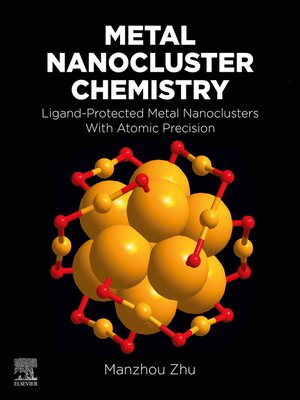Metal Nanocluster Chemistry
ebook ∣ Ligand-Protected Metal Nanoclusters With Atomic Precision
By Manzhou Zhu

Sign up to save your library
With an OverDrive account, you can save your favorite libraries for at-a-glance information about availability. Find out more about OverDrive accounts.
Find this title in Libby, the library reading app by OverDrive.



Search for a digital library with this title
Title found at these libraries:
| Library Name | Distance |
|---|---|
| Loading... |
Atomically precise metal nanoclusters occupy the gap between discrete atoms and plasmonic nanomaterials, and they offer intriguing physical-chemical properties that can be rationalized in terms of their quantum size effects and discrete electronic states. The atomically precise nature of their structures lends them well to structure-property relationship elucidation, making them particularly useful for informing the rational design of nanoclusters with enhanced performance. Metal Nanocluster Chemistry: Ligand-Protected Metal Nanoclusters With Atomic Precision provides a concise introduction to the study of these useful nanoclusters.
Beginning with an introduction to the fundamental concepts of, and prospects for, metal nanoclusters, the book goes on to highlight synthetic methods for controllable preparation. The subsequent chapters then highlight characterization, mechanism of size growth and structure evolution, and physical-chemical properties. Later chapters examine theoretical approaches for calculating and evaluating structures and properties. They also highlight the assembly of nanocluster building blocks and their practical applications. Drawing on the knowledge of its expert author, Metal Nanocluster Chemistry is a useful introductory guide to these exciting structures. - Provides a concise introduction to atomically-precise metal nanoclusters, ranging from characterization and property investigation to applications
- Includes insight into both current trends and future potential, encouraging and supporting further development
- Holistically combines physical approaches with theoretical calculation methods







